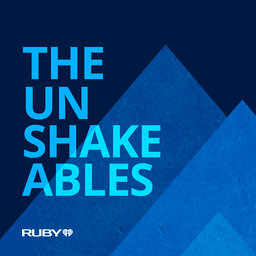Bionic Breakthrough: Psyonic
Aadeel Akhtar always knew he wanted to help people, but instead of following the traditional path through medicine, he took a detour that led to something a little more electric: building a bionic hand. He started his company Psyonic to merge engineering with compassion and transform the prosthetics industry, but it didn’t come easily. Dead batteries, buggy code, and even a missing patient nearly cost him his shot.
Join Ben Walter and Kathleen Griffith as they sit down with Aadeel to talk about walking away from med school, betting on a vision, and building a business that could change life for millions. These are The Unshakeables.
To see the Ability Hand in action, check it out here.
 The Unshakeables
The Unshakeables


